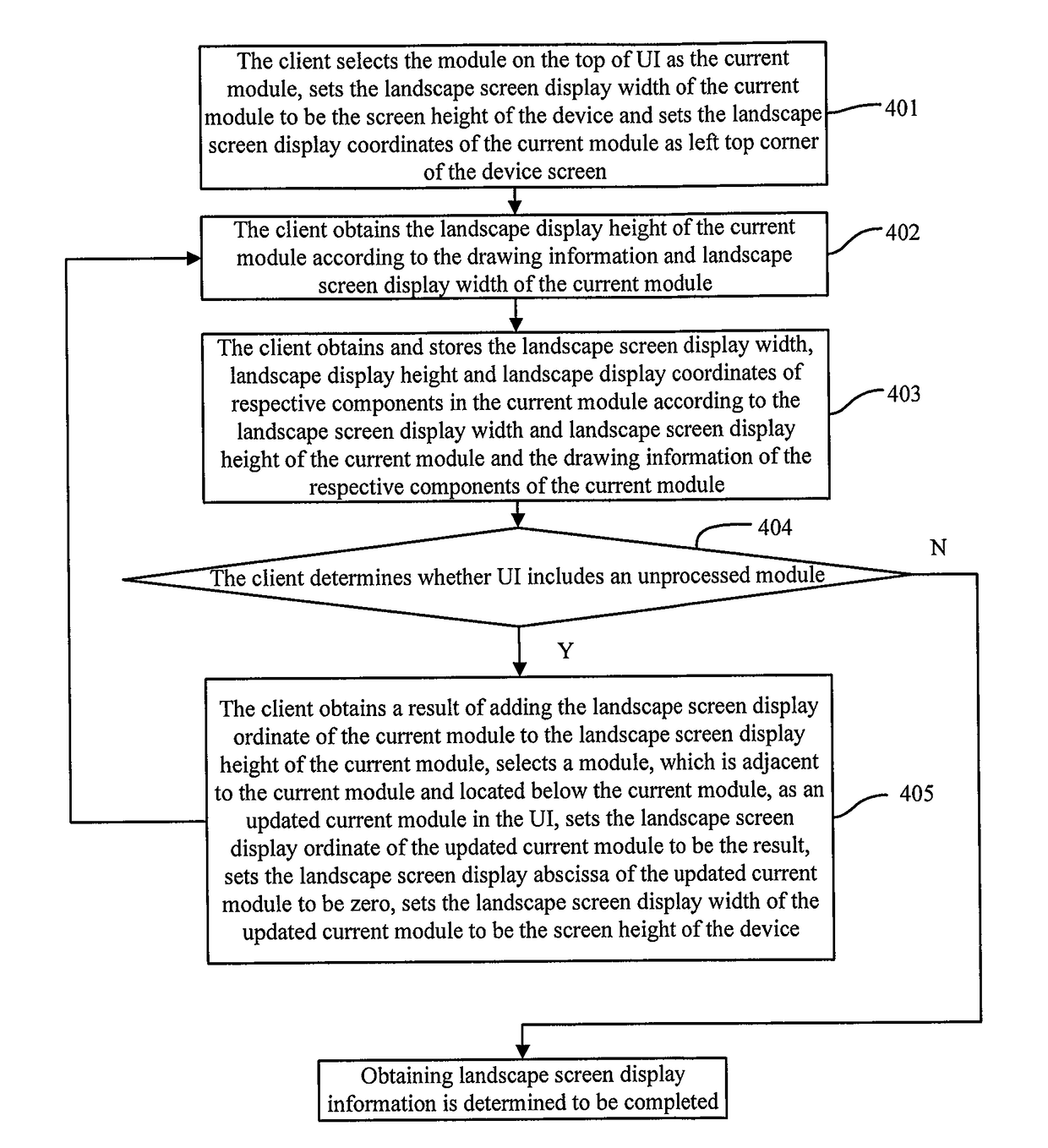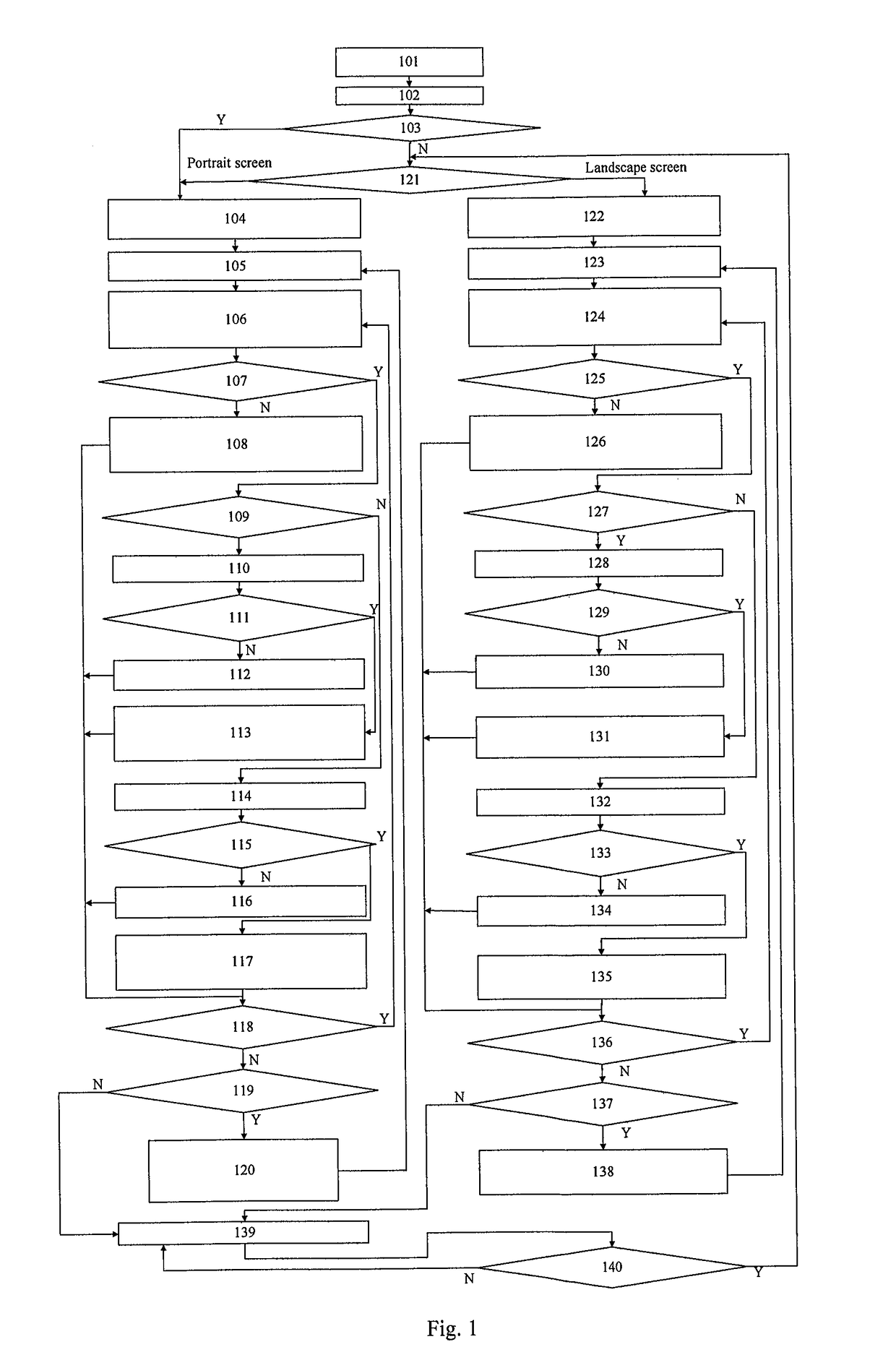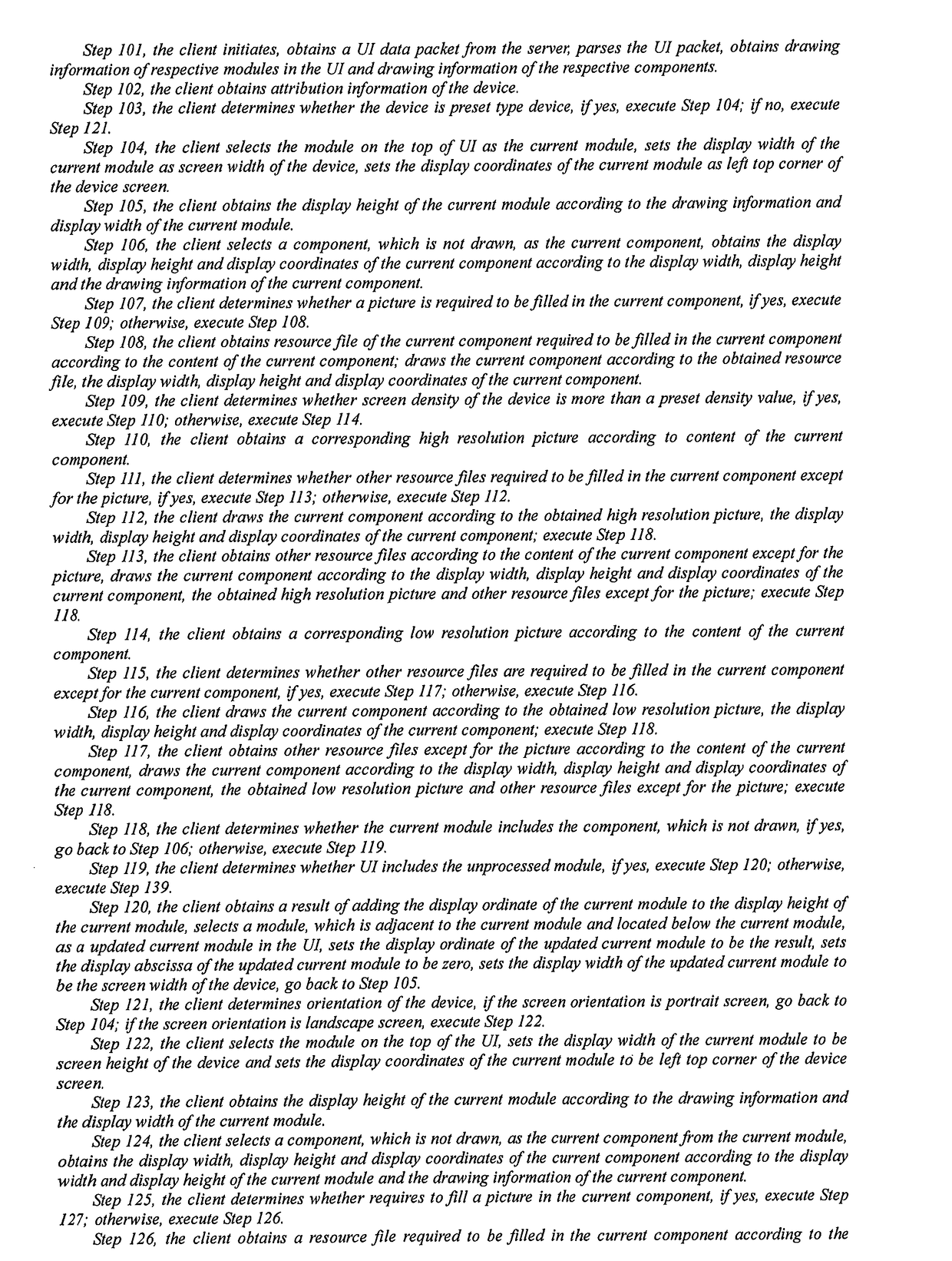Screen adaptation method and apparatus
a screen adaptation and apparatus technology, applied in the field of terminal display technology, can solve the problems of low screen adaptation efficiency and heavy working load of screen adaptation, and achieve the effect of high screen adaptation efficiency and light work load
- Summary
- Abstract
- Description
- Claims
- Application Information
AI Technical Summary
Benefits of technology
Problems solved by technology
Method used
Image
Examples
embodiment 1
[0047]In Embodiment 1, the client can invoke function UI_USER_INTERFACE_IDIOM to obtain type information of the device, takes value of size attribution in [UIScreen mainScreen] bounds as screen size of the device; invokes function of UIInterfaceOrientationIsPortrait in order to obtain screen orientation of the device; takes value of size attribution in [UIScreen mainScreen] currentMode as screen resolution of the device.
[0048]For example, the type information of the device is “iPhone4”, the screen size of the device is 251 pt*141 pt; the screen orientation of the device is landscape, the screen resolution is 1136 px*640 px.
[0049]Step 103, the client determines whether the device is preset type device, if yes, execute Step 104; if no, execute Step 121.
[0050]Specifically, the client can determine that whether the device is preset type device according to type information of the device; in this case, the prest type device can be a cellphone.
[0051]For example, the type information of th...
embodiment 2
[0140]In Embodiment 2, the user interface can includes a plurality of modules and respective modules in the user interface are arranged vertically, each module includes one or a plurality of components; the portrait display information of the respective components includes the portrait screen display width, portrait screen display height and portrait screen display coordinates of the respective components; the landscape display information of the respective components includes the landscape screen display width, landscape screen display height and landscape screen display coordinates of the respective components.
[0141]Correspondingly, in above process, operation that the client obtains and stores the portrait screen display information of the respective components can be detailed as shown in flow diagram of FIG. 3, which includes the following steps:
[0142]Step 301, the client selects the module on the top of the UI as the current module, sets the portrait display width of the curren...
embodiment 3
[0192]In Embodiment 3, the client draws UI according to screen size and screen orientation of the device, the drawing information of the module and components in UI so that screen adaptation and landscape-portrait screen switching is performed among different screen sizes of the device, which improves smoothness, reduces workload of screen adaptation and improves screen adaptation efficiency and user experience according to pictures corresponding to screen density.
[0193]It can be understood that all of or part of the steps in the above embodiments can be realized by hardware, a soft module executed by a processor or combination of both. The soft module can be stored in RAM (random-access memory), memory, ROM (read-only memory), electrically programmable read-only memory, electrically erasable programmable read-only memory, register, hard disc, mobile disc, CD-ROM (Compact Disc Read-Only Memory) or any other public known forms of storage media in the prior art.
PUM
 Login to View More
Login to View More Abstract
Description
Claims
Application Information
 Login to View More
Login to View More - Generate Ideas
- Intellectual Property
- Life Sciences
- Materials
- Tech Scout
- Unparalleled Data Quality
- Higher Quality Content
- 60% Fewer Hallucinations
Browse by: Latest US Patents, China's latest patents, Technical Efficacy Thesaurus, Application Domain, Technology Topic, Popular Technical Reports.
© 2025 PatSnap. All rights reserved.Legal|Privacy policy|Modern Slavery Act Transparency Statement|Sitemap|About US| Contact US: help@patsnap.com



